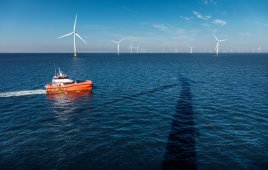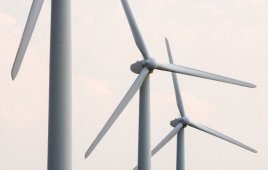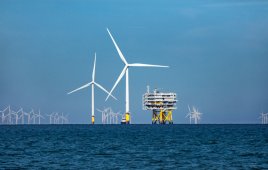Article by Troy Hewitt / Global Business Leader / Wind Energy / Intertek
While worker safety is the paramount concern of wind farm owners, project downtime because of non-compliance with electrical safety codes comes in a close second. Years of experience testing windpower products in the laboratory and the field have provided lessons for manufacturers and installers on how they can allay the concerns of local code enforcers and gain product certification and NEC compliance. Here, our company engineers share the top seven issues they see manufacturers, installers, and technicians facing today.
1. Improper use of certified components
Products are tested and certified with a particular use or “normal conditions” in mind. Any use outside those conditions could adversely affect the product’s safety and performance characteristics. When the product or its components appear installed or in use beyond the intended ratings, an electrical inspector is likely to red-flag it. Components can often be qualified for other applications, but planning is required to complete qualification in advance of the new use so compliance is demonstrated to inspectors and delays are avoided.
2. Increased scrutiny for arc flash warnings
An article published in Industrial Equipment News recently stated that 5 to 10 arc flash accidents involving fatality or serious injury occur every day in the United States. OSHA, electrical inspectors, and corporate safety officers are beginning to pay closer attention to electrical equipment’s potential for arc flash. Proper labeling of equipment, the amount of fault current available in different parts of wind turbines, and even education on workers’ protective equipment are all under scrutiny.
3. More focus on Safety Related Control Systems
Safety Related Control Systems (SRCS) help ensure the correct operation and safety of the overall turbine, but what’s governing the SRCS’ ability to operate correctly? Is the system’s firmware up-to-date and working as intended? Has the software been validated and properly tested before the SRCS was operational? Failures in the control systems, in the alarm and monitoring systems, and in the protection systems could cause severe injury and extended downtime for the turbine. IEC 61508, Functional Safety: Safety-Related Systems and related standards were drafted to provide a means of validating the ability of the system to provide the necessary level of risk reduction and are important to show compliance with new industry requirements.
4. General OSHA issues
OSHA compliance issues are often cited as reasons for downtime. Common OSHA problems include the size of access doors leading to electrical components and the amount of workspace provide around them; insufficient locations and provisions for Lockout-Tagout (LOTO) and an inadequate number of first aid kits on-site and insufficient content within the kits that are “readily available.” First aid kits are covered by 29 CFR 1910.151(b) and Appendix A, ANSI Z308.1. OSHA also has a problem with fixed ladders that do not meet 29 CFR 1910.27(e) requirements for pitch, and enclosed versus confined spaces as outlined in 29 CFR 1910.269(e) and 29 CFR 1910.146. OSHA regulation compliance is a critical element of designing the wind turbine because correcting these issues in the field is extremely expensive and sometimes impossible.
5. Medium voltage
Use of medium voltage in wind turbines has grown and leads to new challenges for manufacturers, installers, and those performing maintenance. Proper selection of components and installation methods are critical elements to avoiding compliance issues. Improperly certified – or a lack of certified – cables, splices, lugs, and elbows can put the entire system and users at risk.
6. Wiring methods
In any electrified installation, the safety and performance is only as good as the wiring methods used. Wind turbines are no different. Most commonly, we see issues with approved versus non-approved splices and terminations in power cables, bundling of cables with dissimilar ratings, use of one cable to support other cables, and incomplete raceways. We are also seeing more rigorous cable management requirements intended to protect conductors from damage from abrasion and over-temperature.
7. Support equipment
Obviously, a successful wind turbine (and wind farm) involves a lot more equipment than just a tower, nacelle, and blades. Items such as personnel lifts and elevators, blade de-icing systems, personal protection equipment, and other support equipment are critical to keeping the turbines operational. Many products are already under the auspices of product safety standards, including ASME A17.1 and A17.7. It is important to view these products or sub-systems as critically as other electrical components in the turbine because any compliance or certification issues in the support equipment can mean lost time and increased costs. WPE
Filed Under: O&M, Safety, Turbines





hello
I want to work as a member of the service technician with you
Vestas Wind Service Technician I am working as system a.ş